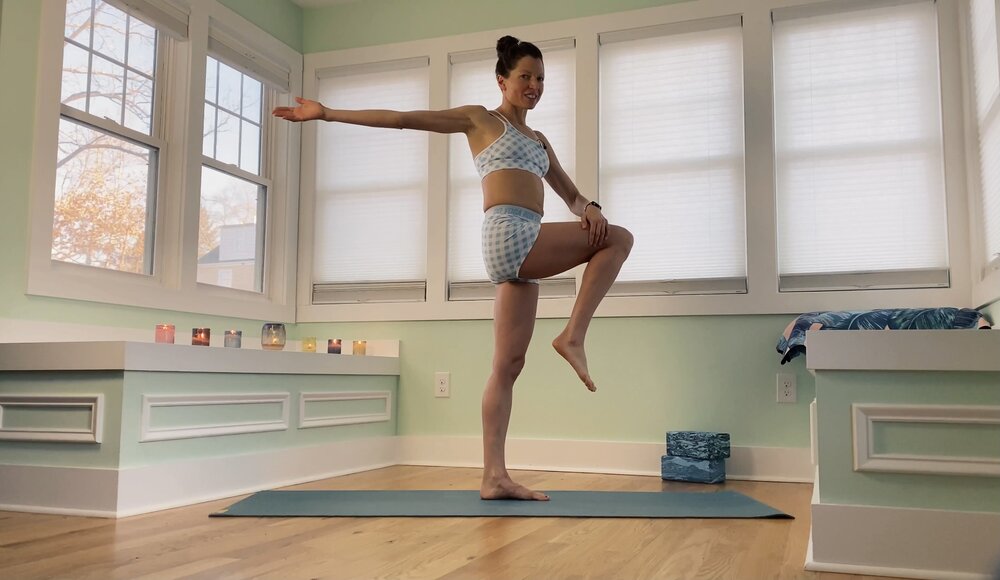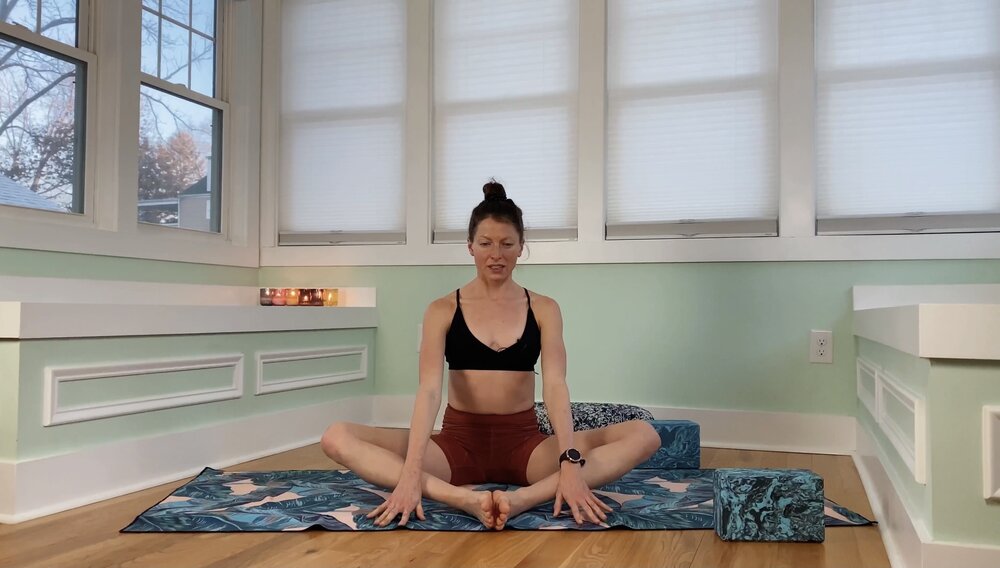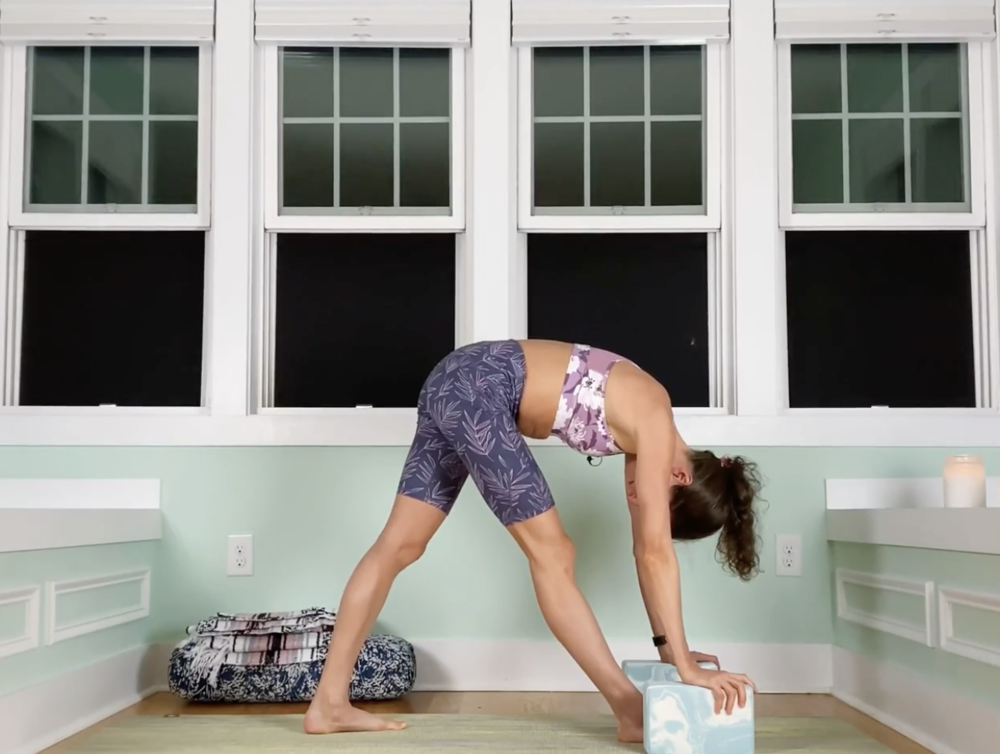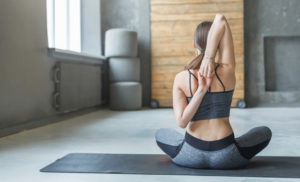“But… yoga is boring!”
As a yoga teacher, you tend to hear certain refrains from those who don’t regularly practice yoga (yet!) for whatever reason: one of these is the good old “but I’m not flexible!” to which I usually respond with “I wasn’t either when I first started!” because, truly, I was not, please take my word for it! But, whether or not you are or are not flexible is also no reason to do or to not do yoga!! As you will eventually discover, hopefully earlier rather than later in your yoga journey, it matters far less what you look like while doing a pose, what poses you can do to the deepest available option, what poses you can even DO, period. Instead it matters a lot more what your yoga practice does for your body in terms of how it makes you feel, physically, mentally, and emotionally. It matters one millions times less whether you can do a split, and one million times more whether you are actually listening to your body while doing any particular pose (which is what actually doing yoga is all about, anyways). So, go do YOUR yoga, whether you deem yourself flexible or not!
That said, probably the second most common reason for not doing yoga is that yoga is boring. (Sometimes the person tries very hard to not hurt my feeling as they realize they are talking to a yoga teacher, and they say something like “yoga is just not for me”—but if you read between the lines here, what they are trying to say is that yoga is just not interesting or fun for them!) My answer here is not, in fact, that yoga is always interesting, but that “you just haven’t found the right yoga for you!”—because, yes, you are right, yoga can be VERY boring indeed if you don’t have the right teacher for you! So, first things first. Before we add in ways to make your existing yoga practice a little zestier, let’s first address the most important consideration for new or uninitiated yogis in particular!
1.) Find the teacher or style that is right for YOU.
Just like you can have a teacher who turns their high school chemistry students into a bunch of “nodding penguins” (this was the term that my Mechanical Engineering prof gave to students whose heads dropping forward jolted them awake again), you can equally have a yoga teacher or teacher of any subject or discipline who makes that subject or discipline much less titillating and fun and beneficial than it might otherwise be. If you went to one yoga class and found it super boring, don’t judge all of yoga off that one class! (This is like running one 10k and saying you don’t like racing in general or doing that particular distance!) Chances are that teacher was just not the yoga teacher for you, but trust me on this, there IS a yoga teacher out there who IS for you. (There are also—this sounds harsh but is also true—just generally some very not-so-good teachers, whether of high school chemistry or yoga or anything else! So, keep this in mind as well. Sometimes it is a matter of fit of teaching style, personality, what you are looking for in a yoga practice, and sometimes it is a matter of just finding someone who is flat out just a good, experienced teacher, but in either case, you owe it to your soon-to-be-feeling-better body-on-yoga to find YOUR yoga teacher out there!
The term “yoga” has grown to encompass many varieties of yoga, from Ashtanga to vinyasa to Iyengar to yin to Kundalini to power, and while all of these sub-disciplines are incredibly different (though similar in some ways!), so are all the individual teachers within that discipline incredibly different in their personalities, the manner in which they teach (though similar in some ways too!). So, my advice to the new yoga student who thinks yoga is boring is to try as many teachers and styles as they can until they find the one that clicks. You will find the one that you love! It is also worth noting that different yoga styles can vary a lot from place to place: my experience of power yoga in London (which I loved and could be called creative vinyasa) was not even close to my experience of power yoga in a Northeastern U.S. city (which I did not enjoy and found altogether too Bikram-esque!). You may also find that different styles or teachers are more fitting to you at different times in your life: being stuck in a chair too often during grad school in my 20s, I gravitated towards powerful vinyasa classes, whereas now I am much more appreciative of yin yoga’s restorative effects on the fascia and body as a whole too!


Experienced yogis need a change sometimes too!
So, we’ve talked about the yoga newbie, but what about the experienced yogi who just needs a way to spice up their yoga? Here are the ways
2.) Try a different style than your typical practice
Especially as an experienced yogi, you already have a foundation in yoga basics which makes it easier to explore various styles of yoga or different classes. You are not going to feel adrift and uncertain in most yoga scenarios, so you should feel like you can give yourself the green light to try that very different Kundalini class that your Aunt Melinda keeps raving about (hi, Aunt Melinda!). This doesn’t mean you have to do the crazy Kundalini class all the time, but it might just be a fun little adventure in your usual yoga routine.
Likewise, if you always do hard-core vinyasa, you might try some yin yoga! (It might in fact be exactly what you didn’t know you needed!) As a naturally high energy person, I was surprised by how much I really loved yin yoga, and even more surprised that I seemed to be getting a lot of running benefits by adding in some dedicated yin time to my schedule every week. While my yoga teaching style tends to be a blend of vinyasa and yin, I found that “set aside” yin only time to be truly restorative to my body as a whole. Yin is an extremely accessible practice which uses a lot of props (though that doesn’t mean it is “easy” per se either!) so both experienced and new yogis alike should give it a go. And if you want some yin to do anytime, you should definitely check out my 16 class Yin Yoga: the Complete Practice which is on Runners Love Yoga TV (definitely start with the first class as I give you a nice overview of yin too!)
3.) Add in some props!
Ok, so you love low lunge as a pose, but how about low lunge with a block under each palm? The pose becomes totally different feeling in how and where it stretches you. Similarly, you can integrate a yoga bolster into your savasana by putting it under your knees, or try out a yoga strap on your feet in a reclining twist. Adding in a prop is not, I repeat, not, “cheating” but instead a way to get more out of each pose by changing the number of ways in which you might experience it. I could probably write a short yoga book on prop use, but here are a few ways to easily work the most widely available props into your practice.

Blocks (firstly, make sure you have 2 to start, not just 1 single block! You can do so much more with a pair!)
-
palms on blocks in low lunge
-
palms on blocks in downdog to give you a boost as you step feet from front to back of your mat
-
palms on blocks in parsvottanasana
-
palm on block in triangle or revolved triangle
Bolster (we do ALL of these in my yin yoga course too!)
-
bolster under knees in savasana
-
torso supported by bolster in reclining bound angle
-
reclining deer pose laying on bolster
-
scissor legs on the bolster, with torso face-down
These are truly just a very few of the ways to integrate props into your practice. Keep in mind that you can also use the wall as a prop, or even use hand weight as bonus strength-building props as we do in my Yoga for Strength & Stability course!
4.) Do yoga for a shorter length of time
Maybe this is a rather unexpected one, but I think that like the thoughts of an hour long run can sound intimidating, a 20 min. run sounds like something that you can do no matter what. Similarly, and especially if you are a runner (which you probably are if you are reading this!), you may not have the time to really want to do an extended yoga session each day. But, maybe if you do just a shorter 20-30 min. yoga session each day, you will be more consistent and thus find more joy and enlivening aspects of your yoga in your life more generally speaking. (This is also, by the way, why I have designed the large majority of Runners Love Yoga TV workouts to be of a very accessible length, which you can see in the Friday Flows released each week here!)
Whether you are brand new to your yoga or have been practicing triangle pose for years, you can always find ways to grow in your yoga. If you are a new yogi, first start by getting a fabulous teacher and style that suits your needs as a runner, athlete, and person. If you are an experienced yogi, remember that you have the toolbox to expand the kind of yoga classes that you attend, and can add additional adventure to your time on the mat by adding props or incorporating shorter classes to gain consistency over the additional years of your life as a yogi to come!
“But… yoga is boring!”As a yoga teacher, you tend to hear certain refrains from those who don’t regularly practice yoga (yet!) for whatever reason: one of these is the good old “but I’m not flexible!” to which I usually respond with “I wasn’t either when I first started!” because, truly, I was not, please take my word for it! But, whether or not you are or are not flexible is also no reason to do or to not do yoga!! As you will eventually discover, hopefully earlier rather than later in your yoga journey, it matters far less what you look like while doing a pose, what poses you can do to the deepest available option, what poses you can even DO, period. Instead it matters a lot more what your yoga practice does for your body in terms of how it makes you feel, physically, mentally, and emotionally. It matters one millions times less whether you can do a split, and one million times more whether you are actually listening to your body while doing any particular pose (which is what actually doing yoga is all about, anyways). So, go do YOUR yoga, whether you deem yourself flexible or not!That said, probably the second most common reason for not doing yoga is that yoga is boring. (Sometimes the person tries very hard to not hurt my feeling as they realize they are talking to a yoga teacher, and they say something like “yoga is just not for me”—but if you read between the lines here, what they are trying to say is that yoga is just not interesting or fun for them!) My answer here is not, in fact, that yoga is always interesting, but that “you just haven’t found the right yoga for you!”—because, yes, you are right, yoga can be VERY boring indeed if you don’t have the right teacher for you! So, first things first. Before we add in ways to make your existing yoga practice a little zestier, let’s first address the most important consideration for new or uninitiated yogis in particular!1.) Find the teacher or style that is right for YOU.Just like you can have a teacher who turns their high school chemistry students into a bunch of “nodding penguins” (this was the term that my Mechanical Engineering prof gave to students whose heads dropping forward jolted them awake again), you can equally have a yoga teacher or teacher of any subject or discipline who makes that subject or discipline much less titillating and fun and beneficial than it might otherwise be. If you went to one yoga class and found it super boring, don’t judge all of yoga off that one class! (This is like running one 10k and saying you don’t like racing in general or doing that particular distance!) Chances are that teacher was just not the yoga teacher for you, but trust me on this, there IS a yoga teacher out there who IS for you. (There are also—this sounds harsh but is also true—just generally some very not-so-good teachers, whether of high school chemistry or yoga or anything else! So, keep this in mind as well. Sometimes it is a matter of fit of teaching style, personality, what you are looking for in a yoga practice, and sometimes it is a matter of just finding someone who is flat out just a good, experienced teacher, but in either case, you owe it to your soon-to-be-feeling-better body-on-yoga to find YOUR yoga teacher out there!The term “yoga” has grown to encompass many varieties of yoga, from Ashtanga to vinyasa to Iyengar to yin to Kundalini to power, and while all of these sub-disciplines are incredibly different (though similar in some ways!), so are all the individual teachers within that discipline incredibly different in their personalities, the manner in which they teach (though similar in some ways too!). So, my advice to the new yoga student who thinks yoga is boring is to try as many teachers and styles as they can until they find the one that clicks. You will find the one that you love! It is also worth noting that different yoga styles can vary a lot from place to place: my experience of power yoga in London (which I loved and could be called creative vinyasa) was not even close to my experience of power yoga in a Northeastern U.S. city (which I did not enjoy and found altogether too Bikram-esque!). You may also find that different styles or teachers are more fitting to you at different times in your life: being stuck in a chair too often during grad school in my 20s, I gravitated towards powerful vinyasa classes, whereas now I am much more appreciative of yin yoga’s restorative effects on the fascia and body as a whole too!
Experienced yogis need a change sometimes too!So, we’ve talked about the yoga newbie, but what about the experienced yogi who just needs a way to spice up their yoga? Here are the ways2.) Try a different style than your typical practiceEspecially as an experienced yogi, you already have a foundation in yoga basics which makes it easier to explore various styles of yoga or different classes. You are not going to feel adrift and uncertain in most yoga scenarios, so you should feel like you can give yourself the green light to try that very different Kundalini class that your Aunt Melinda keeps raving about (hi, Aunt Melinda!). This doesn’t mean you have to do the crazy Kundalini class all the time, but it might just be a fun little adventure in your usual yoga routine.Likewise, if you always do hard-core vinyasa, you might try some yin yoga! (It might in fact be exactly what you didn’t know you needed!) As a naturally high energy person, I was surprised by how much I really loved yin yoga, and even more surprised that I seemed to be getting a lot of running benefits by adding in some dedicated yin time to my schedule every week. While my yoga teaching style tends to be a blend of vinyasa and yin, I found that “set aside” yin only time to be truly restorative to my body as a whole. Yin is an extremely accessible practice which uses a lot of props (though that doesn’t mean it is “easy” per se either!) so both experienced and new yogis alike should give it a go. And if you want some yin to do anytime, you should definitely check out my 16 class Yin Yoga: the Complete Practice which is on Runners Love Yoga TV (definitely start with the first class as I give you a nice overview of yin too!)3.) Add in some props!Ok, so you love low lunge as a pose, but how about low lunge with a block under each palm? The pose becomes totally different feeling in how and where it stretches you. Similarly, you can integrate a yoga bolster into your savasana by putting it under your knees, or try out a yoga strap on your feet in a reclining twist. Adding in a prop is not, I repeat, not, “cheating” but instead a way to get more out of each pose by changing the number of ways in which you might experience it. I could probably write a short yoga book on prop use, but here are a few ways to easily work the most widely available props into your practice.
Blocks (firstly, make sure you have 2 to start, not just 1 single block! You can do so much more with a pair!)palms on blocks in low lungepalms on blocks in downdog to give you a boost as you step feet from front to back of your matpalms on blocks in parsvottanasanapalm on block in triangle or revolved triangleBolster (we do ALL of these in my yin yoga course too!)bolster under knees in savasanatorso supported by bolster in reclining bound anglereclining deer pose laying on bolsterscissor legs on the bolster, with torso face-down These are truly just a very few of the ways to integrate props into your practice. Keep in mind that you can also use the wall as a prop, or even use hand weight as bonus strength-building props as we do in my Yoga for Strength & Stability course!4.) Do yoga for a shorter length of timeMaybe this is a rather unexpected one, but I think that like the thoughts of an hour long run can sound intimidating, a 20 min. run sounds like something that you can do no matter what. Similarly, and especially if you are a runner (which you probably are if you are reading this!), you may not have the time to really want to do an extended yoga session each day. But, maybe if you do just a shorter 20-30 min. yoga session each day, you will be more consistent and thus find more joy and enlivening aspects of your yoga in your life more generally speaking. (This is also, by the way, why I have designed the large majority of Runners Love Yoga TV workouts to be of a very accessible length, which you can see in the Friday Flows released each week here!) Whether you are brand new to your yoga or have been practicing triangle pose for years, you can always find ways to grow in your yoga. If you are a new yogi, first start by getting a fabulous teacher and style that suits your needs as a runner, athlete, and person. If you are an experienced yogi, remember that you have the toolbox to expand the kind of yoga classes that you attend, and can add additional adventure to your time on the mat by adding props or incorporating shorter classes to gain consistency over the additional years of your life as a yogi to come! Read More
Read More








